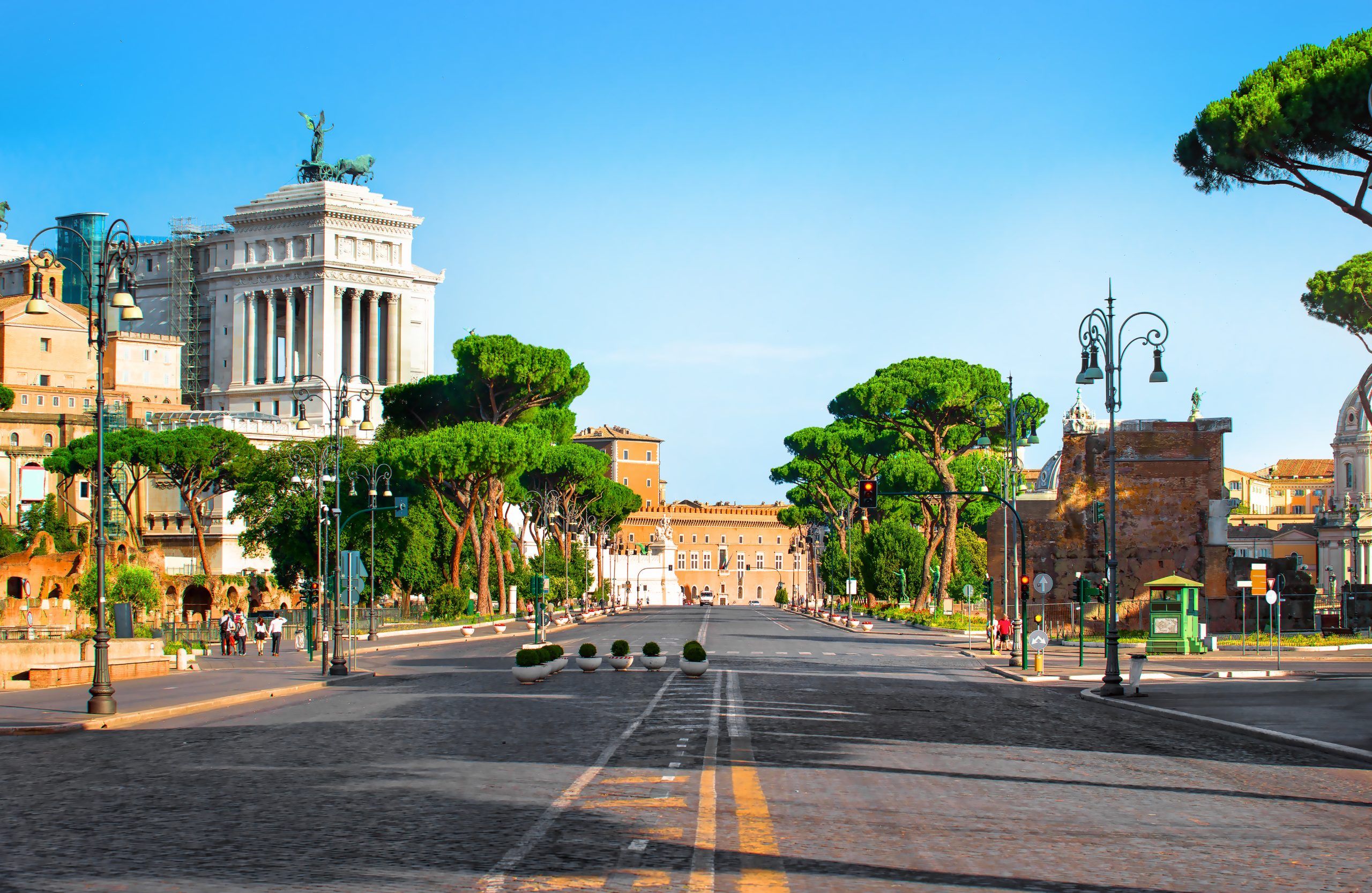Ultimate Visitor Guide to the Rome Jubilee 2025: Key Insights
If you are planning to visit Rome during the Jubilee 2025, here is an essential guide to help you navigate this extraordinary event. For more detailed tips and insights, you can also check out essential tips for visitors.
What is the Jubilee?
The Jubilee, also known as a Holy Year, is a significant event in the Catholic calendar that occurs every 25 years. It is a time of spiritual renewal, forgiveness, and celebration. The Jubilee 2025 will begin on December 24, 2024, and end on December 24, 2025, with various events and ceremonies taking place throughout the year\2\34.
Sujet a lire : What are the top locations in the UK for an immersive experience in Victorian literature?
Key Events for Giubileo 2025
Opening of the Holy Doors
The Jubilee 2025 will kick off with an opening Mass led by Pope Francis in St. Peter’s Square on December 24, 2024, at 7 p.m., followed by the symbolic opening of the Holy Door at St. Peter’s Basilica. This event marks the beginning of the Jubilee year and is a highlight for pilgrims and visitors alike. The Holy Doors of the other three major basilicas—St. John Lateran, St. Paul Outside the Walls, and St. Mary Major—will open in succession after St. Peter’s\1\34.
Special Masses and Celebrations
Throughout the year, there will be numerous special masses and celebrations. Don’t miss the Stations of the Cross at the Colosseum on Good Friday or the World Meeting of Families, a vibrant gathering that celebrates unity. These events offer countless opportunities for worship and cultural engagement2.
Dans le meme genre : Find out how to secure tickets for the Vatican today!
Cultural and Artistic Events
Rome’s museums, galleries, and theaters will join the Jubilee celebrations by hosting special exhibitions, concerts, and performances. These events are perfect for those looking to combine faith with culture, making the Jubilee a rich and diverse experience2.
Pilgrimage Routes
Holy Door Pilgrimage
Pilgrims can walk through the Holy Doors of the four major basilicas: St. Peter’s Basilica, St. John Lateran, St. Paul Outside the Walls, and St. Mary Major. This pilgrimage is a central part of the Jubilee experience, symbolizing a path to forgiveness and new beginnings\1\3.
The Seven Churches Pilgrimage
Dating back to the 16th century, this 25-kilometer route, created by St. Philip Neri, takes pilgrims to seven historic churches, including the Vatican’s St. Peter’s Basilica, St. Sebastian, and St. Lawrence Outside the Walls. This route extends into the Roman countryside and catacombs, offering a deep dive into Rome’s spiritual and historical heritage1.
European Patronesses and Saints Route
This route features special stops at churches honoring European female saints, such as St. Bridget’s Church and Santa Maria Sopra Minerva, where St. Catherine of Siena’s relics are kept. This path allows pilgrims to discover the lives of these saints who have deeply influenced Catholic history and the European Union1.
Europe in Rome
This unique path features 28 churches, each representing a member state of the European Union, highlighting artistic and cultural ties and Rome’s historic role in welcoming European pilgrims. This route is a celebration of unity and diversity within the EU1.
Practical Tips for Visiting Rome During the Jubilee
Plan Ahead
Registering for the Pilgrim’s Card early is crucial to secure your place at key events and manage your pilgrimage schedule. This free digital pass helps organize pilgrimages, including visits to the Holy Doors, and provides access to major Jubilee events\1\3.
Map Your Routes
Holy Doors and other popular sites can get very busy, so plan to visit early in the morning or during quieter times. Using a map or a guided tour can help you navigate the city efficiently and avoid the crowds\1\2.
Celebrate the Saints
Use the Roman Catholic saints’ calendar to time your visit with feast days and events honoring these historic figures. This adds a deeper layer of meaning to your pilgrimage and allows you to participate in various celebrations throughout the year1.
Accommodation and Travel Tips
Booking Early
Accommodations and tours will sell out quickly, so it is essential to reserve your spot well in advance. While pilgrims often stay in religious housing or hotels outside the city, booking central accommodations early is still recommended to ensure easy access to key Jubilee sites2.
Choosing Guided Tours
Skip the lines and gain deeper insights with expert-led tours. Tours like the Pristine Sistine Tour by Walks of Italy offer early access to the Vatican Museums and Sistine Chapel, making your visit more efficient and enriching2.
Packing Smart
Comfortable shoes are a must for Rome’s cobblestones, and dressing modestly for visits to religious sites is essential. Downloading key apps like Citymapper can help you navigate public transport, while Vatican apps may provide event updates2.
The Holy Doors: A Symbol of Forgiveness
What Are the Holy Doors?
The Holy Doors are sacred entrances that open only during a Jubilee year, symbolizing a path to forgiveness. For Giubileo 2025, the Holy Doors of St. Peter’s Basilica, St. John Lateran, St. Paul Outside the Walls, and St. Mary Major will be open, allowing pilgrims to walk through as part of their spiritual journey\1\3.
Ceremonies Surrounding the Holy Doors
The opening and closing ceremonies of the Holy Doors have a rich history. Initially, the sealed “door” was a bricked-up portal on both sides, and the Pope would use a silver hammer to open it. However, this ceremony has been simplified over time to ensure safety. Today, the Pope pushes the door open to signal the beginning of the Holy Year, and he is the last person to walk through the door before closing it at the end of the Jubilee3.
Sustainable Travel Tips
With millions of visitors expected, it is crucial to minimize your environmental impact. Here are some sustainable travel tips:
- Use Public Transport: Rome has an efficient public transport system. Use buses, trams, and metro lines to get around the city.
- Walk or Bike: Rome is a walkable city, and biking is another great way to explore without contributing to pollution.
- Reduce Waste: Avoid single-use plastics and opt for reusable bags and water bottles.
- Support Local Businesses: Choose local restaurants and shops to support the local economy and reduce carbon footprint.
Day Trips and Extended Adventures
Rome is the perfect starting point for exploring the rest of Italy. Here are some day trip and extended adventure ideas:
Florence
- Walk in the footsteps of Renaissance masters and visit the Uffizi Gallery.
- Explore the Duomo and Ponte Vecchio.
Venice
- Glide through canals and discover the magic of St. Mark’s Square.
- Visit the Doge’s Palace and Rialto Bridge.
Pompeii & Amalfi Coast
- Explore ancient ruins and breathtaking coastal views.
- Visit the towns of Positano, Amalfi, and Ravello.
Experiencing Rome Beyond the Jubilee
While the Jubilee’s religious and cultural events are the main attraction, Rome offers countless other experiences.
Discover Hidden Neighborhoods
- Escape the crowds and explore Rome’s quieter corners like Trastevere, Monti, and Testaccio.
- Enjoy local cuisine and wine in these charming neighborhoods.
Historical Landmarks
- Visit the Colosseum and Roman Forum to step back into ancient Rome’s glory days.
- Explore the Pantheon, a marvel of engineering and one of the best-preserved Roman buildings.
- Toss a coin at the Trevi Fountain to ensure your return to the Eternal City2.
Table: Key Dates and Events for Giubileo 2025
| Date | Event |
|---|---|
| December 24, 2024 | Opening Mass and Holy Door at St. Peter’s Basilica |
| December 29, 2024 | Holy Door opens at St. John Lateran |
| January 1, 2025 | Holy Door opens at St. Mary Major |
| January 5, 2025 | Holy Door opens at St. Paul Outside the Walls |
| December 28, 2025 | Holy Doors close at the end of the Jubilee Year |
| January 6, 2026 | Holy Door at St. Peter’s Basilica closes on the Feast of the Epiphany |
List: Essential Items to Pack for Your Visit
- Comfortable Shoes: Rome is a walkable city, and comfortable shoes are a must.
- Modest Clothing: Dress modestly for visits to religious sites.
- Reusable Water Bottle: Stay hydrated and reduce waste.
- Power Adapter: Italy uses Type L power sockets.
- Travel Documents: Ensure you have all necessary travel documents, including your Pilgrim’s Card.
- Guidebook or Map: Help navigate the city and its many sites.
- Camera: Capture the beauty and history of Rome.
- Sun Protection: Sun hat, sunglasses, and sunscreen for outdoor explorations.
Quotes from Experts and Pilgrims
- “The Jubilee is a time of spiritual renewal and forgiveness. It’s a unique opportunity to experience the rich spiritual heritage of Rome.” – Pope Francis4
- “Rome during the Jubilee is a city transformed. It’s bustling with activity, but there’s a sense of peace and unity among the pilgrims.” – Elyssa from RomeWise2
- “Passing through the Holy Doors is not just a physical act; it’s a spiritual journey towards forgiveness and new beginnings.” – Through Eternity Blog3
The Rome Jubilee 2025 is an event that offers something for everyone—whether you are a pilgrim seeking spiritual renewal, a history enthusiast, or a curious traveler. With careful planning, the right guidance, and a willingness to immerse yourself in the city’s rich culture and history, your visit to Rome during the Jubilee can be an unforgettable experience.
\`\`\`html Ultimate Visitor Guide to the Rome Jubilee 2025: Key Insights
Ultimate Visitor Guide to the Rome Jubilee 2025: Key Insights
If you are planning to visit Rome during the Jubilee 2025, here is an essential guide to help you navigate this extraordinary event. For more detailed tips and insights, you can also check out essential tips for visitors.
What is the Jubilee?
The Jubilee, also known as a Holy Year, is a significant event in the Catholic calendar that occurs every 25 years. It is a time of spiritual renewal, forgiveness, and celebration. The Jubilee 2025 will begin on December 24, 2024, and end on December 24, 2025, with various events and ceremonies taking place throughout the year\2\34.
Key Events for Giubileo 2025
Opening of the Holy Doors
The Jubilee 2025 will kick off with an opening Mass led by Pope Francis in St. Peter’s Square on December 24, 2024, at 7 p.m., followed by the symbolic opening of the Holy Door at St. Peter’s Basilica. This event marks the beginning of the Jubilee year and is a highlight for pilgrims and visitors alike. The Holy Doors of the other three major basilicas—St. John Lateran, St. Paul Outside the Walls, and St. Mary Major—will open in succession after St. Peter’s\1\34.
Special Masses and Celebrations
Throughout the year, there will be numerous special masses and celebrations. Don’t miss the Stations of the Cross at the Colosseum on Good Friday or the World Meeting of Families, a vibrant gathering that celebrates unity. These events offer countless opportunities for worship and cultural engagement2.
Cultural and Artistic Events
Rome’s museums, galleries, and theaters will join the Jubilee celebrations by hosting special exhibitions, concerts, and performances. These events are perfect for those looking to combine faith with culture, making the Jubilee a rich and diverse experience2.
Pilgrimage Routes
Holy Door Pilgrimage
Pilgrims can walk through the Holy Doors of the four major basilicas: St. Peter’s Basilica, St. John Lateran, St. Paul Outside the Walls, and St. Mary Major. This pilgrimage is a central part of the Jubilee experience, symbolizing a path to forgiveness and new beginnings\1\3.
The Seven Churches Pilgrimage
Dating back to the 16th century, this 25-kilometer route, created by St. Philip Neri, takes pilgrims to seven historic churches, including the Vatican’s St. Peter’s Basilica, St. Sebastian, and St. Lawrence Outside the Walls. This route extends into the Roman countryside and catacombs, offering a deep dive into Rome’s spiritual and historical heritage1.
European Patronesses and Saints Route
This route features special stops at churches honoring European female saints, such as St. Bridget’s Church and Santa Maria Sopra Minerva, where St. Catherine of Siena’s relics are kept. This path allows pilgrims to discover the lives of these saints who have deeply influenced Catholic history and the European Union1.
Europe in Rome
This unique path features 28 churches, each representing a member state of the European Union, highlighting artistic and cultural ties and Rome’s historic role in welcoming European pilgrims. This route is a celebration of unity and diversity within the EU1.
Practical Tips for Visiting Rome During the Jubilee
Plan Ahead
Registering for the Pilgrim’s Card early is crucial to secure your place at key events and manage your pilgrimage schedule. This free digital pass helps organize pilgrimages, including visits to the Holy Doors, and provides access to major Jubilee events\1\3.
Map Your Routes
Holy Doors and other popular sites can get very busy, so plan to visit early in the morning or during quieter times. Using a map or a guided tour can help you navigate the city efficiently and avoid the crowds\1\2.
Celebrate the Saints
Use the Roman Catholic saints’ calendar to time your visit with feast days and events honoring these historic figures. This adds a deeper layer of meaning to your pilgrimage and allows you to participate in various celebrations throughout the year1.
Accommodation and Travel Tips
Booking Early
Accommodations and tours will sell out quickly, so it is essential to reserve your spot well in advance. While pilgrims often stay in religious housing or hotels outside the city, booking central accommodations early is still recommended to ensure easy access to key Jubilee sites2.
Choosing Guided Tours
Skip the lines and gain deeper insights with expert-led tours. Tours like the Pristine Sistine Tour by Walks of Italy offer early access to the Vatican Museums and Sistine Chapel, making your visit more efficient and enriching2.
Packing Smart
Comfortable shoes are a must for Rome’s cobblestones, and dressing modestly for visits to religious sites is essential. Downloading key apps like Citymapper can help you navigate public transport, while Vatican apps may provide event updates2.
The Holy Doors: A Symbol of Forgiveness
What Are the Holy Doors?
The Holy Doors are sacred entrances that open only during a Jubilee year, symbolizing a path to forgiveness. For Giubileo 2025, the Holy Doors of St. Peter’s Basilica, St. John Lateran, St. Paul Outside the Walls, and St. Mary Major will be open, allowing pilgrims to walk through as part of their spiritual journey\1\3.
Ceremonies Surrounding the Holy Doors
The opening and closing ceremonies of the Holy Doors have a rich history. Initially, the sealed “door” was a bricked-up portal on both sides, and the Pope would use a silver hammer to open it. However, this ceremony has been simplified over time to ensure safety. Today, the Pope pushes the door open to signal the beginning of the Holy Year, and he is the last person to walk through the door before closing it at the end of the Jubilee3.
Sustainable Travel Tips
With millions of visitors expected, it is crucial to minimize your environmental impact. Here are some sustainable travel tips:
- Use Public Transport: Rome has an efficient public transport system. Use buses, trams, and metro lines to get around the city.
- Walk or Bike: Rome is a walkable city, and biking is another great way to explore without contributing to pollution.
- Reduce Waste: Avoid single-use plastics and opt for reusable bags and water bottles.
- Support Local Businesses: Choose local restaurants and shops to support the local economy and reduce carbon footprint.











